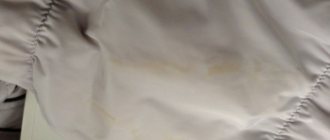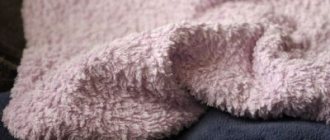We were all looking forward to getting out of quarantine. We were looking forward to putting on our favorite dresses, skirts and blouses and going to a cafe or going shopping. But being forced to stay at home took its toll on our sides, stomachs and other places. Changing their spring wardrobe for a summer one, many ladies were horrified to discover that they had almost nothing to wear. Everything is not enough: it presses here, it presses there. Don't panic, you don't have to open your piggy bank and run to the store for new clothes. We revive the wardrobe on our own, namely, we embroider clothes.
Increasing the volume of the sleeves
It often happens that if you gain a little weight, the thing fits even better. Where necessary, it was tightened and emphasized. But such models usually have a weak point - the sleeves. If your hand looks like a sausage, tightly sealed in a shell with all the folds and constrictions, it looks very unaesthetic. Let's look at several ways to embroider a sleeve.
Unnoticeable
Suitable for single-color items or small prints in one main color. In this case, you will still have to expand the main part. To do this, rip the blouse or dress along the seam. This creates an underarm and side seam. We insert a single-color strip of material of the required width and simply sew it together. The fabric can be chosen to match or contrast. The main thing is that the insert looks harmonious.
Flare the sleeve
You can make the sleeves wider towards the cuff, but leave the same width near the shoulder. In this case, you won’t have to rip out any extra seams. Determine the highest point on the shoulder. It is usually located on the shoulder seam. Carefully fold the sleeve along this point to the cuff and cut.
Now you need to determine how much to embroider the sleeve. It is better to put on the item and bend your arm at the elbow and determine a comfortable width. It is imperative to record how much the edges of the incision near the cuff have diverged. This will be the widest part of our wedge. The wedge will be narrowest at the top. Now we cut out a triangle whose height is equal to the length of the sleeve. Such an insert can be plain, printed, or transparent. It all depends on the original style and color. Carefully sew in and smooth out. This method is good because it does not affect the overall size of the item.
Full seam insert
There can be many options here. We cut the sleeve in the same way as in the previous case, but at the same time we rip out the shoulder seam. And here there are possible options. Simply insert fabric that matches the color and texture. You can make your clothes romantic by adding lace or mesh.
Another option is denim stripes. They will look great with natural plain fabrics (linen, cotton). They can be sewn straight, crossed, braided or tied in knots. It all depends on your imagination and the original model. Lacing will make the item not only original and stylish, but also universal in size. Now you can gain weight and lose weight, and adjust the size using a lace.
How to make a T-shirt a size larger
You may have gotten your size wrong when you made an online purchase, or your T-shirt has shrunk after washing, or you've gained weight— in any of these cases, you can correct the situation.
T-shirts made from natural fabric most often shrink in size after washing. Cotton fabric tends to shrink when exposed to high temperatures. Manufacturers add a synthetic component, elastane, to cotton, which prevents the product from pilling and tightening during and after washing. If trouble does happen and you need to increase the T-shirt by one size, you need to take a large towel, lay the wet product on it, carefully level it and dry it in this form - the T-shirt should return to its previous size.
Important! To avoid troubles after washing, carefully read the information provided on the product label. Manufacturers always indicate the temperature permissible for washing. Be sure to follow the instructions provided.
Increasing the overall width
We have already discussed in a few words above how to do this along the side seam. Moreover, this method is well known and described on the Internet. We will consider original solutions.
There is no need to have a seam on the back. If you need to increase the size of a blouse or tunic, you can simply cut it, leaving the neck intact. Finish the edges of the cut nicely. You can make overlays from leather or denim. Sew in several ribbons, which will then be tied into bows, preventing the cut from diverging when bending or other movements.
You can insert lace or mesh into the cut. You can drape the fabric and close the cut. It all depends on the figure, how much the item needs to be expanded and the desired end result.
There are no options ahead. You need to make an insert from a material that matches the texture and color.
Return of the lost form for products of different colors and materials
Depending on the fabric from which the shirt is made and its color, the methods for stretching it will differ. Recommendations are presented in the table:
| Shirt characteristics | How to effectively deal with shrinkage | Important Features |
| Cotton, linen | Hair conditioner | Do not wring out after washing |
| Wool, silk | Stretching with weights or in cold water | Do not use steam or chemicals |
| Synthetics | Freezing | Not picky fabric, all methods of exposure are suitable, but the item must be ironed at the lowest possible temperatures |
| Jeans | Pulling with weights or freezing | All processing methods are suitable, but since the fabric is rough, a significant effect cannot be achieved |
| White fabric | Hydrogen peroxide, milk, vinegar | Soak and dry separately from colored and black items |
| Colored fabric | Cold water, weight pulling, vinegar treatment | Soak and dry separately from white and black items |
| Black | Freeze, cold water | Soak and dry separately from white and colored items |
Embroider a skirt or trousers
Traditionally, the length of trousers, jeans and skirts is embroidered along the outer seam. Rip it open, insert a strip of fabric of the required width and sew it together. With trousers, the same operation can be done from the inside. In this case, contrasting fabric will look original.
There are more options with a skirt. For example, you can insert half of a fabric of a different color onto the front. This method is good for a classic cut, for leather or denim skirts. You can make several different colors. This is already a complex procedure, which is more reminiscent of altering a product.
You can change the front part, then the side seams will go back. If done carefully, it will not be noticeable.
If you need to embroider the product only at the waist, it is enough to make inserts on the sides or back seam. This is how they expand things in the studio, but you can do it at home, without even using a machine.
This is how you can change things inexpensively. At the same time, your favorite outfits will be transformed, become even more interesting, and the money will remain in the piggy bank.
How to properly wash and clean a coat
To prevent a wool, drape or cashmere coat from shrinking or becoming deformed, you need to properly wash or clean the product. This material is cleaned with a soft brush. To remove strong and difficult stains, you can soak the brush in water or soap solution. For cleaning and washing, it is better to take this coat to the dry cleaner.
At home, outerwear made of wool, drape or cashmere can be washed in a delicate cycle or a special cycle for wool at a temperature not exceeding 30 degrees. Products are washed by hand at a temperature of 20-25 degrees. For washing, use special soft gels or shampoos that are suitable for this type of material.
Before washing, be sure to remove metal objects and fur elements, collar and cuffs. If possible, unfasten or open the lining and wash and dry separately. Turn the coat inside out, fasten the zippers, buttons and snaps. Place the product in a cover or laundry bag, or in a regular duvet cover or pillowcase.
Add wool conditioner when rinsing. Wash without spinning and drying in a washing machine! After water procedures, wrap your coat in a light terry towel or sheet to absorb moisture. Then lay the clothes on a horizontal surface and leave to dry in a well-ventilated area.
The coat should only be stored upright and dry in a closed closet. You can use special covers for clothes. Once every two to four weeks, take out and air the products. Regularly clean the material from dust and dirt using a special soft brush. For more information on how to properly wash, store and dry a woolen coat, read the link https://vsepodomu.ru/garderob/mozhno-li-stirat-sherstyanoe-palto/.
Important Tips
In order to avoid completely ruining your shirt when trying to stretch it, you need to take into account the following recommendations:
To cope with the problem, the product should be stretched while drying. However, the tension force must be controlled so as not to damage the fabric.
After returning the shirt to its original size, you must follow the manufacturer's instructions for caring for it. Otherwise, the next incorrect wash will cause it to shrink again.
Source
Upgrade ideas
An old and unused wardrobe item does not have to be thrown away. An unnecessary product is subject to rework, and there may be several of them. By adding or changing a few elements, you can create a new stylish outfit. For example, a long style can be cut by adjusting the length. You can, on the contrary, create an elongated version. For this, lace or material of a different shade will be useful.
In order to radically change the style, you can use several options.
Note. Any dress is suitable for work, even a wedding dress. You can make a classic or evening model out of it.
Making a new dress
Having ready-made samples greatly simplifies the work process. First of all, you need to decide what exactly needs to be changed . This determines which seams will need to be ripped out during the process.
Advice. If only the length and style of the sleeve changes, the side seams and hem line can be left unchanged.
An important step is the preparation of the product itself. The material must be clean and well ironed .
Tools for work
To make a new dress based on an existing one, you will need the following.
Completing of the work
After preparation, we begin the technological process. The necessary seams must be opened and the remaining threads carefully removed. The pattern is transferred to the fabric . A small piece of chalk is suitable for marking the outline. When working, it is important to leave seam allowances of about a centimeter. After preparation, each element is carefully cut out.
Advice. When working on a sewing machine, it is first recommended to process the shoulder seams and sleeves.
Many craftswomen treat the neck area with bright trim. Afterwards you can start working on the side seams and finishing the bottom.
Advice . Before you start sewing on a machine, you can overcast the parts and try on the product. This will help to correct any errors in a timely manner.











